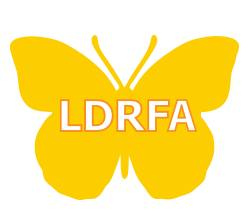Assistive Technology (AT), as officially defined in 1987, improves learning for individuals with physical impairments, cognitive problems and learning disabilities by compensating for the person’s limitations.
Table of Contents
ToggleAT can be defined as “any item, piece of equipment, or product system…that is used to increase, maintain, or improve functional capabilities of individuals with disabilities.”- Assistive Technology devices may be as simple as a magnifying glass or as complicated as a high tech computer software program that highlights text and reads it back to the student.
Assistive Technology can be defined as “any item, piece of equipment, or product system…that is used to increase, maintain, or improve functional capabilities of individuals with disabilities.”
There are four major Federal laws that discuss access to and funding of Assistive Technology and rights of the Disabled We briefly will review each one. (AT Resources Funding Guide)
#1 The Technology Related Assistance For Individuals with Disabilities Act
The Technology Related Assistance For Individuals with Disabilities Act, (Tech Act) first passed in 1988, and reauthorized in 1994 and 1998 reaffirmed that technology is a valuable tool that can be used to improve the lives of Americans with disabilities. (P.L. 105-394) The Tech Act allocates to States a grant to fund an Assistive Technology Act Project (ATAP).
ATAP provides services to persons with disabilities for their entire lifespan, as well as to their families or guardians and service providers, agencies or other entities providing education or employment services to individuals with disabilities.
In NY State the Justice Center administers the Technology-Related Assistance for Individuals with Disabilities (TRIAD) a program to coordinate access to and acquisition of AT in the areas of education, employment, community living and information technology/telecommunications.
An AT Exchange to facilitate equipment exchanges between individuals at lower than market price or for no cost can be acquired on the website. In NY City, ADAPT Community Network formerly United Cerebral Palsy of New York City is the regional center to provide free assistance for all New York City children and adults; educating and acquiring AT for them.
#2 Americans with Disabilities Act (ADA) -1990
The ADA is a civil rights law to make sure that individuals with disabilities have the same rights and opportunities as everyone else. It guarantees equal opportunity for individuals with disabilities in public accommodations, employment, transportation, state and local government services, and telecommunications.
The ADA is divided into five sections that relate to different areas of public life. ADA protects individuals with disabilities from employment discrimination. Employers must provide reasonable accommodations to qualified applicants or employees. A reasonable accommodation is any modification or adjustment to a job or work environment that will enable an applicant or employee with a disability to participate in the application process or to perform essential job functions.
The the use of Assistive Technology may be considered a reasonable accommodation and may facilitate a person’s employment or application/credentialing process with a company or profession that may have otherwise have been denied.
#3 Individuals with Disabilities Education Act (IDEA) -2004
IDEA requires schools to find and evaluate students suspected of having disabilities, at no cost to parents. This Act ensures that every student with a disability receives a Free, Appropriate Public Education (FAPE) that is tailored to their unique needs and prepares them for further education, employment, and independent living. There are 13 Disability Categories that IDEA covers and the child must need special education because of that disability.
Educators utilize a process Response to Intervention (RTI) to help evaluate and monitor students struggling with a skill or lesson and to help identify a specific learning disability. This is often done prior to or in conjunction with the development of the Individual Education Plan (IEP). Once a child has been evaluated and qualifies for special education, The IEP is developed by the team and the parent/guardian.
An IEP is a legal document that spells out a child’s educational goals and the services and supports the school will provide. In 1997 an Amendment to IDEA was enacted. It required that AT devices and services be an accommodation consideration for children grow and every student who is being evaluated for an IEP and if deemed appropriate, must be provided at no cost to parents.
#4 Section 504 of the Rehabilitation Act 1992, 1998
Section 504 is a civil rights law that prohibits discrimination against individuals with disabilities. Section 504 ensures that a child with a disability has equal access to education. The child may receive accommodations and modifications., Assistive Technology is a reasonable accommodation according to Section 504.
This Act may also be used to obtain Assistive Technology for students who were not granted AT under the IDEA.
Students who do not qualify for Special Education according to the IDEA criteria may still be eligible for accommodations such at AT under Section 504.
Who Determines Whether Assistive Technology Will Benefit a Child?
An IEP team will usually determine whether a child needs an assistive technology device, electronic devices or service. An assistive technology evaluation may then be requested by the team. If the parents disagree with the IEP team’s evaluation of their child’s need for Assistive Technology, the parents have the right to request an independent AT evaluation at the school’s expense.
The law requires that a student’s participation in their learning experience be in the Least Restrictive Environment (LRE). The use of AT provides support for a child with a disability, allowing the student to benefit from instructional materials and to communicate effectively. Assistive Technology is included in the definition of “supplementary aids and services” and accommodation as defined in both IDEA and 504.
Assistive Technology Summary
Federal Legislation has over the years been enacted to enable better access to and provision of technology that supports individuals with disabilities. Assistive Technology (AT) was federally defined in 1987 and written into law with the Tech Act of 1988. This ACT supports the goal of our education system which is to ensure that all students have meaningful access to the curriculum.
The Individuals With Disabilities Education Act of 2004 (IDEA) requires schools to provide special education and related services, based on the Individual Education Plan (IEP), customized to meet the student’s specific needs.
The 1997 Amendments to IDEA required that Assistive Technology be considered for every student with a disability as part of the IEP process. AT is classified as an accommodation and provided as a device or a service.
The IEP team usually recommends and evaluates a child for Assistive Technology, however, a parent may submit a written request for an evaluation. If the IEP team denies the need for AT, the parents have the right to request an independent AT evaluation at the school’s expense.
The school is tasked to ensure that the IEP team considers current Assistive Technologies and that AT mandates are provided in a timely manner. The Department of Education is to provide AT assessment, training, resources, screen readers and implementation to support students, families and teachers. With the use of Assistive Technology, it is hoped that the student will attain their academic and instructional goals allowing the student to benefit from instructional materials, mobile devices and communicate effectively.
** These Laws and their interpretations can present with many complexities. Although parents are included in the IEP process, it is best for the parent to work with an advocate, someone who has experience with these matters. **
Photo Credit: Pixabay
 Zahavit Paz is a co-founder of LD Resources Foundation. She’s a graduate of CUNY Graduate disabilities study program. She is often a presenter on Assistive Technology at professional conferences in schools and colleges and has written extensively on her personal struggle with Dyslexia and ADHD. She is an advocate for individuals with LD and provides resources and information through the LDRFA website. More info about Zahavit Paz.
Zahavit Paz is a co-founder of LD Resources Foundation. She’s a graduate of CUNY Graduate disabilities study program. She is often a presenter on Assistive Technology at professional conferences in schools and colleges and has written extensively on her personal struggle with Dyslexia and ADHD. She is an advocate for individuals with LD and provides resources and information through the LDRFA website. More info about Zahavit Paz.


